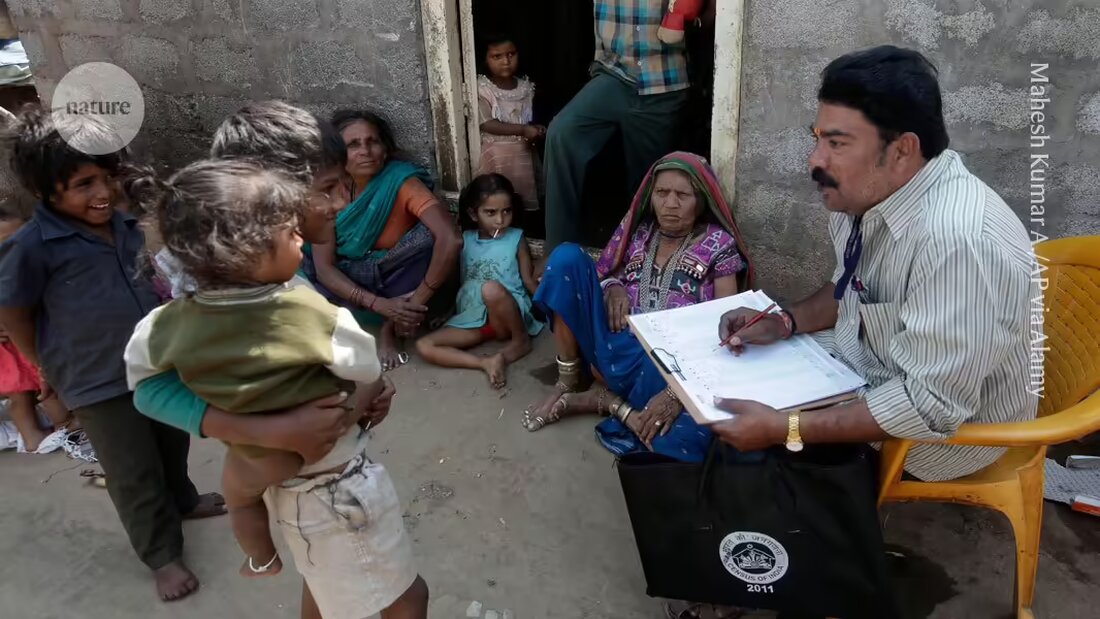Nowadays, Hauz Khas is a chic neighborhood in south Delhi popular with wealthy city dwellers. But parts of the area were classified as rural in 2011, when India's last census was conducted. Researchers say delays in conducting the latest national census, which was postponed in 2021 due to the COVID-19 pandemic and has not yet been rescheduled, mean many key data sets are out of date. Without an updated census, scientists say their analyzes on issues such as population aging and urban migration have become unreliable.
“Conducting the census is now a top priority, otherwise all our survey data will become questionable,” said Pronab Sen, chairman of the Statistics Committee, which advises the Delhi government on its statistical surveys.
The census is a treasure trove of information about the Indian population down to the individual household level. Governments use the data to plan and allocate resources, from vaccines to schools to grain rations. It is also a source of validation for many other surveys and analyzes of economic and health trends.
“If the census is not carried out, it will fundamentally harm Indian social sciences and our ability to understand Indian society,” says Aashish Gupta, a demographer at the University of Oxford, UK.
A herculean task
A census for 1.4 billion people is a Herculean task. Before it begins, there is a housing inventory in which trained census workers, known as enumerators, mark each household on a map. They collect details about the type of each residence and the material it is made of.
The home census forms the basis for the population count, in which enumerators visit each household and collect details such as each member's age, education level and whether they belong to a marginalized group. They also capture details about amenities in the area, such as drinking water supply and electrification. To complete the 2011 census, approximately 2.7 million enumerators conducted face-to-face interviews with people in 240 million households over several weeks.
The data is then collected and published a few years later. The 2021 census was expected to be the first to replace paper-based forms with a mobile app, which could speed up the process. But in September 2020, the government postponed the census due to the COVID-19 pandemic, and to date no new date has been set. “There was enough time for the census to take place,” says Gupta.
Earlier this year, the Delhi Office of the Registrar General and Census Commissioner, which oversees the census, extended the deadline for freezing administrative boundaries, which must be done before the census. The extension should be after the national elections from April to June end.
Nature's news team reached out to the Office of the Registrar General and Census Commissioner for comment on why the census did not take place, but did not receive a response.
Unreliable analytics
Researchers say they can make reliable forecasts about national trends without current census data, but the estimates become less reliable at regional, state and local levels. “We have a fair idea of how many people there are in India, but we have no idea where they are,” Sen says.
Census data also informs the sampling strategy for more detailed and regular government research on births and deaths, as well as economic indicators, from unemployment to poverty to consumption, and health metrics, from fertility to child mortality to anemia. Without updated census data, these surveys will not be representative of the population and will introduce bias, researchers say. For example, areas where the population has grown will be underrepresented and areas where the population has declined will be overrepresented, says Gupta.
"India is a country that is heavily dependent on surveys" because of its poor quality of administrative data systems, says demographer K S James, a visiting scholar at Tulane University in New Orleans and former director of the International Institute for Population Sciences in Mumbai, India, which conducts the country's national family survey.
The quality of these surveys, which are based on census data, is critical to understanding whether the country has made progress on various indicators — for example, whether education and health policies have bridged the gap for marginalized communities or reduced mortality rates among young girls, which studies have found higher than among young boys. “It’s so frustrating,” says Reetika Khera, a development economist at the Indian Institute of Technology Delhi (IIT Delhi). “Have we made progress in the last ten years?”
Researchers find it particularly difficult to examine trends in birth rates and internal migration because there have been so many changes in Indian society over the past decade. There has been rapid rural-urban migration since 2011, as well as a mass return of urban migrants to rural areas during the pandemic. “It is difficult to say what proportion of India’s population currently lives in urban areas,” says Khera. She estimates that using outdated census data means more than 100 million people in rural areas are excluded from government food subsidies.
Researchers also use the census to ensure that their own smaller surveys are representative of the larger population. “We use census comparisons to validate our work,” says Sonalde Desai, a demographer at the University of Maryland at College Park.
Alternative data
Some research groups have looked for alternatives for their surveys. The electoral roll, prepared by the Election Commission of India, is updated at least every five years before a state or federal election. “It is actually a pretty good sampling frame in the absence of the census,” says Krishanu Chakraborty, a public policy researcher and PhD student at IIT Delhi. But it is limited to identifying households, not individuals, he says.
Chakraborty also evaluates techniques that rely on satellite maps and other geographic information in an area to count buildings and determine the size and density of a population. But without updated census data, it is difficult to confirm the accuracy of these datasets.

 Suche
Suche
 Mein Konto
Mein Konto

